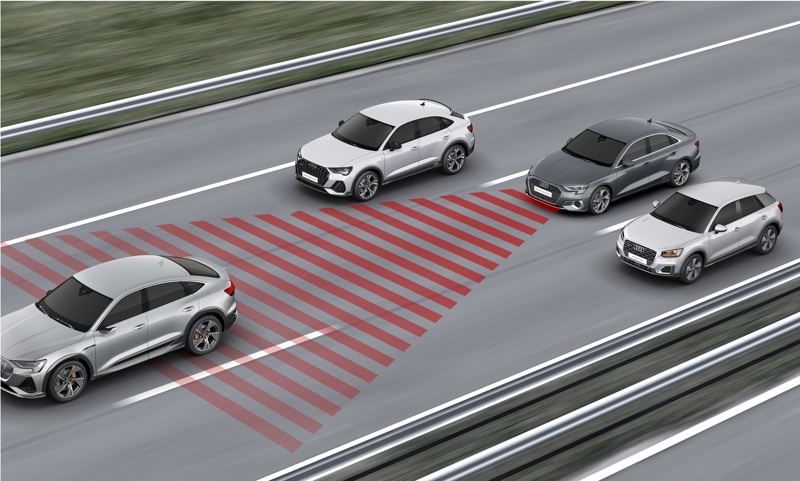Adaptive Cruise Control
Adaptive Cruise Control (ACC) is a driver assistance system that uses sensors and software to maintain a safe following distance between your car and the vehicle in front of you while cruising on the highway.
It is an advanced version of traditional cruise control that adjusts your car’s speed based on the speed of the vehicle in front of you.
How does it work?
Illustration Adaptive Cruise Control Audi
Sensors: ACC uses radar or cameras to detect the distance between your car and the vehicle in front of you.
Speed: The system maintains a set speed that you select, just like traditional cruise control.
Following distance: ACC uses the sensors to detect the distance to the vehicle in front of you and adjusts your car’s speed to maintain a safe following distance.
Braking and acceleration: If the vehicle in front of you slows down or stops, the ACC system will automatically reduce your car’s speed or apply the brakes as necessary to maintain a safe following distance. When the road ahead is clear, the system will accelerate your car back up to the set speed.
Manual override: Most ACC systems allow the driver to override the system at any time by pressing the brake or accelerator pedal.
Following speed limit: On some models, you can set ACC to follow the speed limit based on camera and navigation info. Sadly, the navigation info often needs to be updated, so this is usually turned off.
Adaptive Cruise Control is designed to help drivers maintain a safe following distance and reduce driver fatigue on long highway drives. By taking over the responsibility of adjusting the car’s speed in response to traffic conditions, the driver can focus more on steering and other tasks, making for a safer and more relaxed driving experience.
Most sold EVs globaly
Below, you find the top 10 most-sold EV models in the world. Click on the name for full info.
